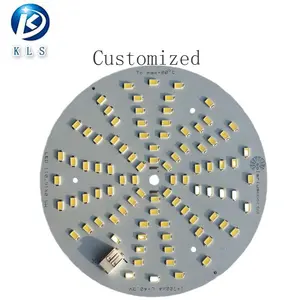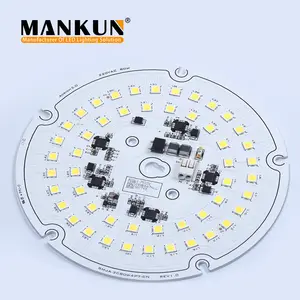Understanding 230V LED PCBs
LED PCBs designed for 230V applications are integral components in modern lighting solutions. These printed circuit boards (PCBs) are specifically tailored to accommodate LEDs, which are semiconductor devices that emit light when an electric current passes through them. The 230V LED PCB is a common specification for regions with a mains voltage of 230V, ensuring compatibility with local electrical standards.
Types and Configurations
There are various types of 230V LED PCBs available, each suited to different applications. Some are designed for use in LED modules, while others are found in LED bulbs. The configuration of the PCB can significantly affect the performance and efficiency of the LED, with options ranging from single-layer designs to more complex multi-layered boards.
Applications and Uses
The application range of 230V LED PCBs is extensive, covering commercial, industrial, and residential lighting. They are often employed in environments that require reliable and consistent light sources, such as office buildings, manufacturing facilities, and street lighting. Their versatility also extends to decorative lighting, where they provide both aesthetics and functionality.
Features and Materials
A 230V LED PCB is characterized by its thermal management capabilities, which are crucial due to the heat generated by LEDs. Materials such as aluminum are commonly used for their excellent heat dissipation properties. The construction of these PCBs also allows for various LED configurations, which can be optimized for light output, color temperature, and energy efficiency.
Advantages of 230V LED PCBs
The advantages of using a 230V LED PCB are numerous. They offer enhanced durability and longevity compared to traditional lighting solutions. The energy efficiency of LEDs, combined with the robust design of the PCBs, results in lower operational costs over time. Additionally, the compact size of LED PCBs allows for innovative design possibilities in lighting fixtures.
Environmental Considerations
Environmental sustainability is an important consideration in the production and use of 230V LED PCBs. These PCBs contribute to energy conservation and reduced carbon footprints due to their efficiency. Furthermore, the materials used in LED PCBs are often selected for their low environmental impact, aligning with eco-friendly initiatives.









































 浙公网安备 33010002000092号
浙公网安备 33010002000092号 浙B2-20120091-4
浙B2-20120091-4